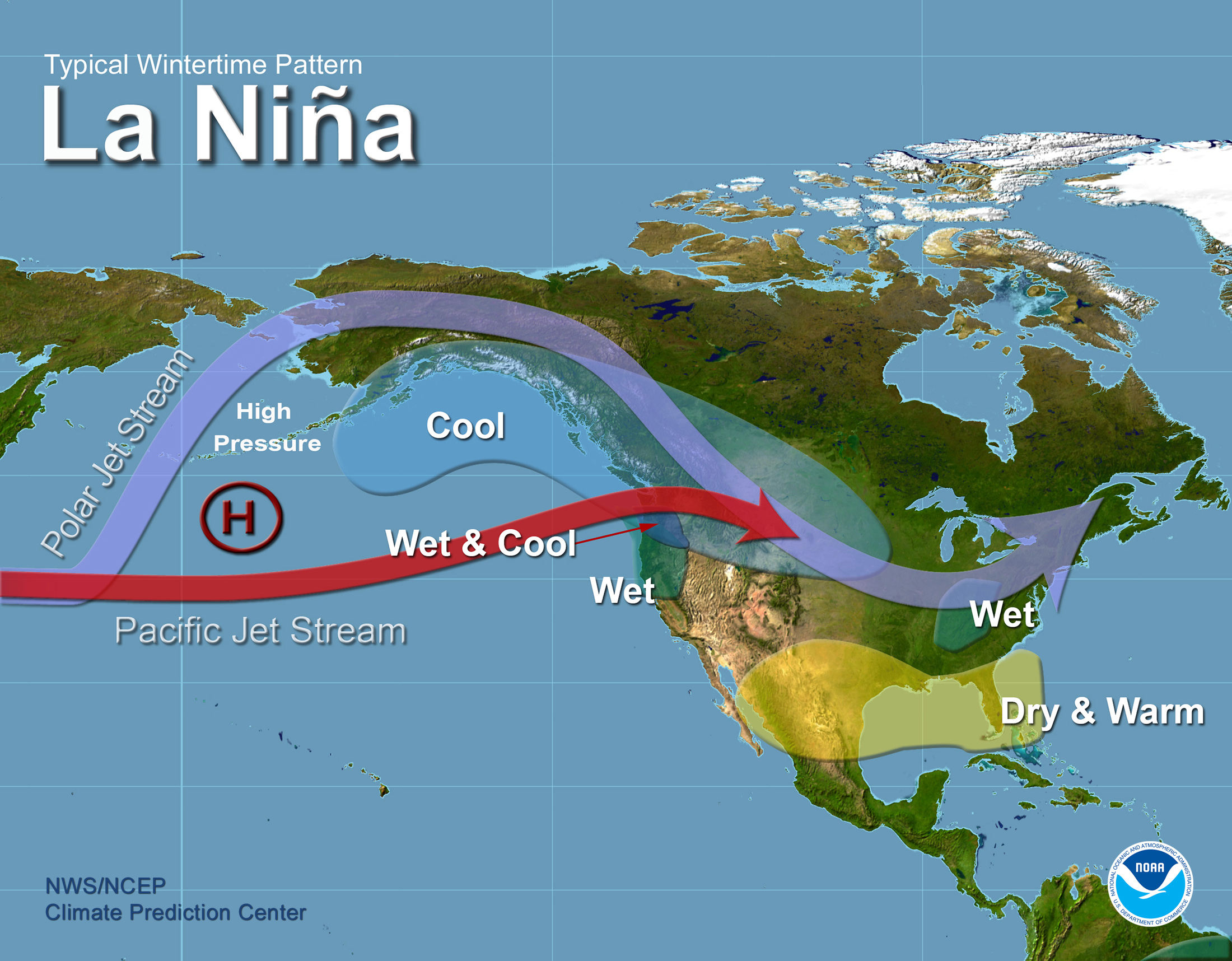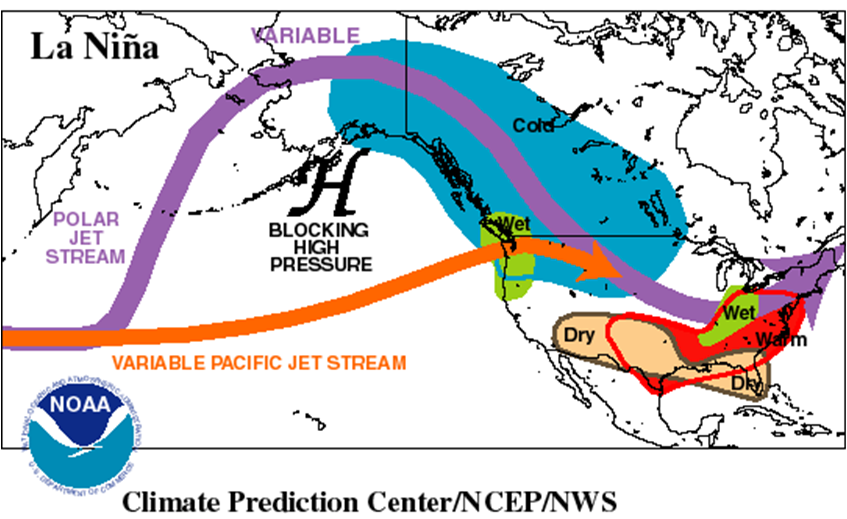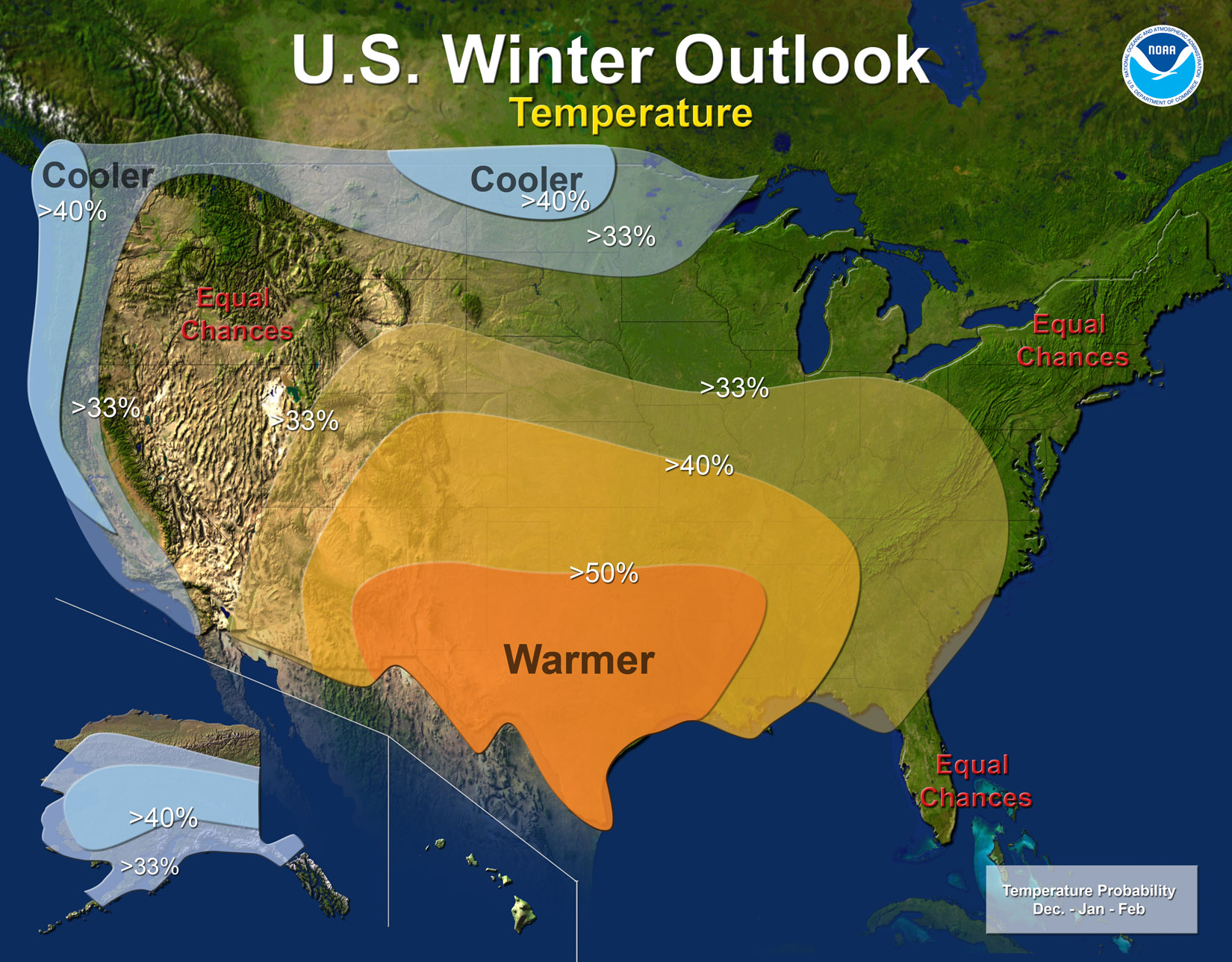Historical La Nina Winters
So says National Weather Service climate. And cooler and wetter in the northern part of the country.

What Is La Nina El Nino Theme Page A Comprehensive Resource
Butthats not why you clicked on this link so lets take a look at what the historical data surrounding La Niña says.

Historical la nina winters. Typical La NIña winter patterns NOAA graphic Alaskans shouldnt read too much into the early season cold temperatures and snowfall. However La Niña often occurs in consecutive winters while El Niño rarely does. The overall temperature and precipitation trends throughout any given winter season are influenced by much more than just having a La Niña an El Niño or neither.
Sometimes its peak lasts from the 4th week of December till the 4th week of January. The top three snowiest winters of all time were all La Niña winters. The following maps are based on 15 past 34 region moderate La Nina of -075 to -124C during December-February.
Some experts have suggested a moderate to strong La Nina. It can be overcome by other events he said. Sustained La Nina conditions are expected to respond and may cast severe winters for North India.
1970-71 followed by 1971-72. Between 1942 and 1957 La Niña had an impact that caused isotope changes in the plants of Baja California. La Niña is.
The prevailing wisdom is that a La Niña winter brings a wetter winter to the Pacific Northwest and a drier warmer winter to Southern California the Southwest and the South. In Canada La Niña will in general cause a cooler snowier winter such as the near-record-breaking amounts of snow recorded in the La. Last winter was technically a La Niña winter but didnt behave at all like a typical La Niña because it was overwhelmed by weather patterns that produced drought which in turn resulted in warmer temperatures.
The freezing temperatures and icy cold winds are more often witnessed during Jan-Feb. The most recent of those was the record-setting winter of 2008-2009 where 977 inches of. So by that count heres the first year La Nina winters that were followed by La Nina the next winter 8 events total.
October 13 2021. It can be seen from Figure 1 that during the mature phase of some La Niña events the absolute value of Niño3 is larger than Niño4 while during the mature phase of some other La Niña events the absolute value of Niño4 is larger than Niño3. La Niña events historically favor colder snowier winters in Minnesota.
The threshold is further broken down into Weak with a 05 to 09 SST anomaly Moderate 10 to 14 Strong 15 to 19 and Very Strong 20 events. Winter temp average. We call this analogue forecasting.
The most recent of those was the record-setting winter of 2008-2009 where 977 inches of snow fell that season. Anomalies during a second-year La Nina winter and compare them to. This series of maps shows precipitation patterns across the continental United States compared to the 1981-2010 average for every winter seasonDecember through Februarysince 1950 that coincided with La Niña conditions in the equatorial Pacific Ocean.
Overall La Niña is not more common that El Niñoin the historical record dating back to 1950 there have been 25 El Niños and 24 La Niñas counting this year. In this case we take just the La Niña years between 1950-51 and 2008-09 and compute the mean. Historical La Niña events into EP and CP types based on normalized Niño3 and Niño4 indices.
The climate pattern known as La Niña generally brings winters that are drier and warmer than usual across the southern US. You may look at that list and assume that there have been more La Niña winters but according to the historical data that is. A second year La Nina means that there was a La Nina winter events tend to reach their strongest point in the winter months prior to the second winter of La Nina.
The short answer. Interestingly enough recent winters seem to show a stronger correlation between La Ninas and above-average snowfall. 1954-55 followed by 1955-56.
However no two La Niña winters will have identical precipitation patterns. The top three snowiest winters of all time were all La Niña winters. A typical La Niña winter pattern.
Events are defined as 5 consecutive overlapping 3-month periods at or above the 05 o anomaly for warm El Ni ñ o events and at or below the -05 anomaly for cold La Ni ña events. But La Niña events now have a powerful competing effect to overcome to produce. Its helpful to compare previous La Nina winters to the upcoming winter.
The uncertainty is because La Niña is only one of a variety of signals that shape our winters. This series of maps shows temperature patterns across the continental United States compared to the 1981-2010 average for every winter seasonDecember through Februarysince 1950 that coincided with La Niña conditions in the equatorial Pacific Ocean. The median ONI value used to split them is -095C during December-February DJF average.
Not only is this the same pattern as last year this La Nina is also near the same strength as last year. For the strength composites we divide the 18 La Niña winters between 1951-2009 into weak or strong cases. While no two winters are identical this gives us an ability to pick out trends in temperature and snowfall.
Over the past 15 years since 2005 there have been seven La Nina Winters and six of these winters were snowier.

La Nina How Does It Impact Our Winter Locally

La Nina Winter Impacts In The Tennessee Valley

La Nina Declared Cooldown Nipping The Warmest Autumn On Record In Northeast U S Weather Underground
Posting Komentar untuk "Historical La Nina Winters"